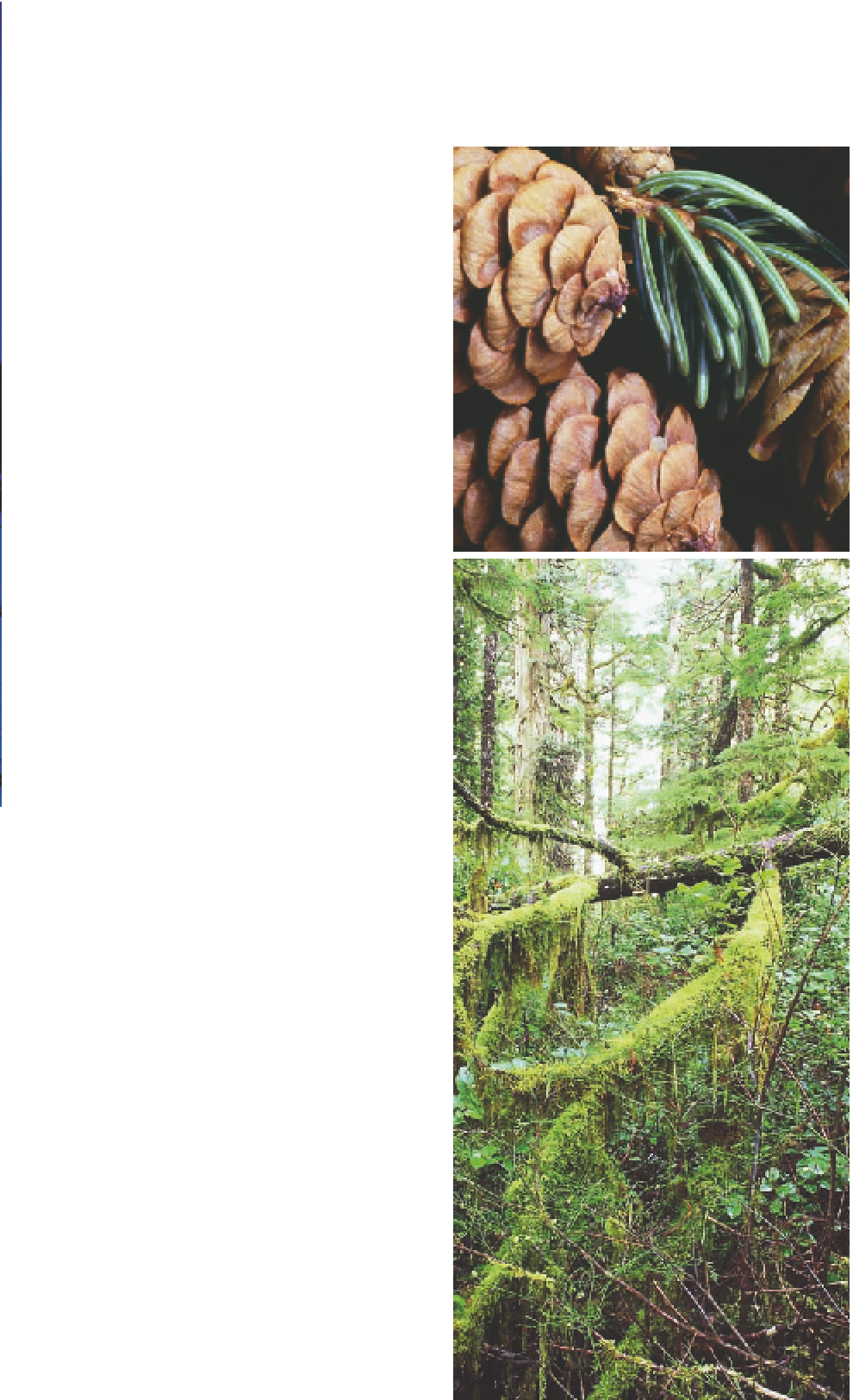Travel Reference
In-Depth Information
Flora
While the plains only cover a small part
of British Columbia, 56% of the prov-
ince's territory is covered by forest. The
forest growing along the coast, Haida
Gwaii (Queen Charlotte Islands) and on
the west coast of Vancouver Island is so
lush that it is called northern rain forest,
the counterpart of the tropical rain for-
est. Douglas fi rs and western red cedars
abound, as does the Sitka spruce. The
Douglas fi r can grow to up to 90m in
height and 4.5m in diameter. This forest
receives up to 4,000mm of rain per year
and many of its trees are more than
1,000 years old, though most of the an-
cient Douglas fi rs were cut down in the
last century. Much higher and drier, the
province's interior is home to vast pine,
spruce and hemlock forests.
Larches grow in the sub-alpine forests
found at higher altitudes. The larch is
the only coniferous tree in Canada that
loses its needles in the fall, after they
turn yellow. They grow back in the
spring.
Sheltered by Vancouver Island, the
southern Gulf Islands have a relatively
dry, mild climate. You'll even fi nd cer-
tain varieties of cacti here, including the
prickly pear. Flowers bloom in this area
all year round, especially in the months
of April and May.
The prairies stretch from southeast
Alberta to Ontario. Grasses cover the
land, except along the rivers, where
5
Giant pine cones.
© Travel Alberta
4
Dense temperate rainforest.
© Pierre Longnus



Search WWH ::

Custom Search